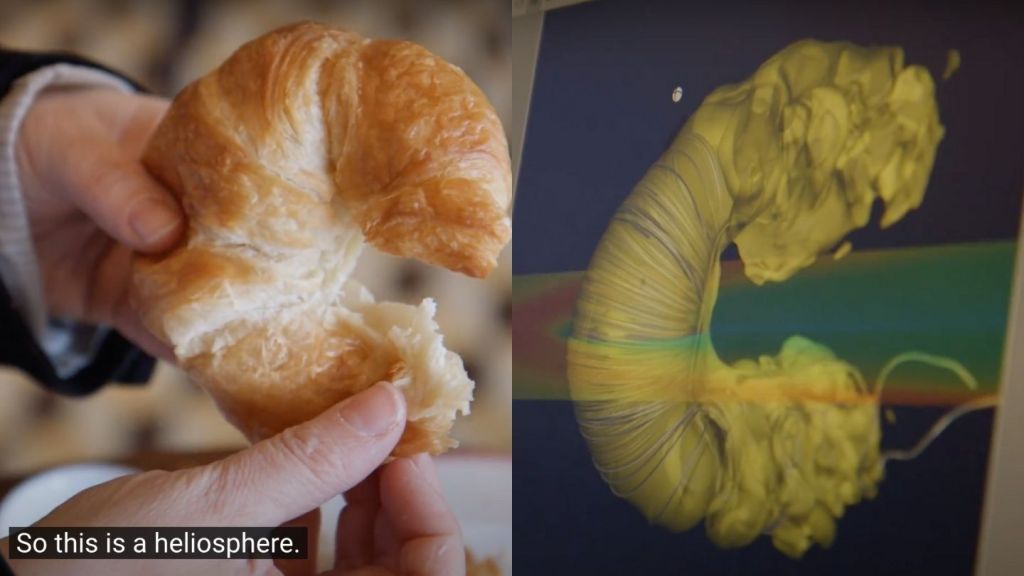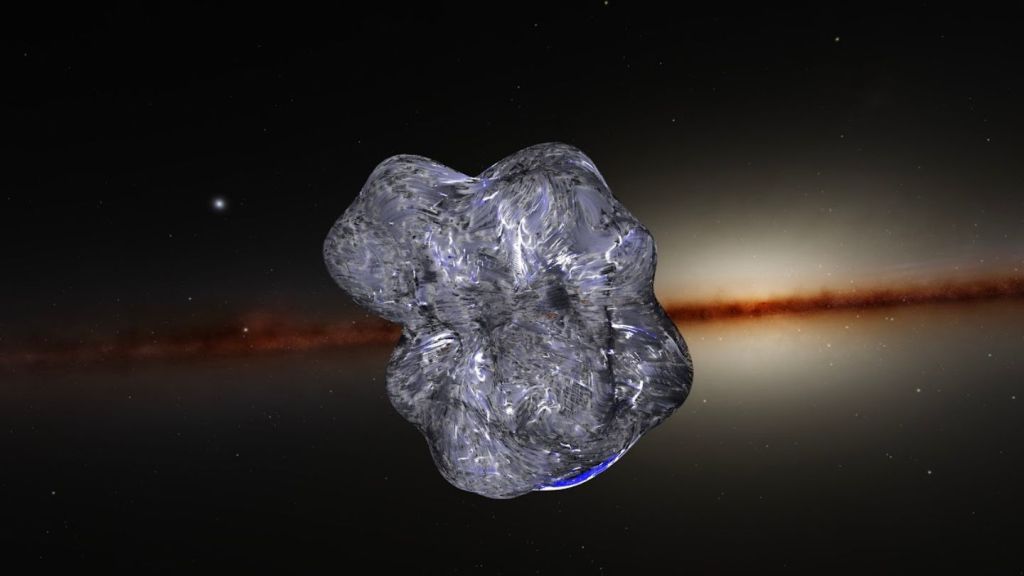Scientists are inching closer to uncovering why our solar system looks something like a delicious, flaky breakfast pastry.
Previously, a team led by Boston University astrophysicist Merav Opher proposed that the heliosphere, which is a bubble of solar wind encompassing the solar system, is shaped like a croissant. For decades, scientists believed that the heliosphere looked like a comet—with one bulbous end and a “tail”—but observations from spacecraft sent beyond the heliosphere to collect data added some wrinkles to that idea, literally.
Videos by VICE
Now, Opher and a team of 12 other researchers have published a new study in the Astrophysical Journal that used computational models to test out variables that could explain why the heliosphere may really be a horseshoe-shaped object with wrinkles and folds encompassing our solar system. In short, it’s because of neutral hydrogen.
Their models found that the object’s shape is determined by the presence of neutral hydrogen particles (meaning, those that don’t carry a charge) that are entering our solar system. These particles stream through the universe, through interstellar space—the medium between our region of space and other star systems—-to enter the heliosphere, where they introduce instability that results in the tasty-looking bulbous “U” shape.
When Opher removed so-called “neutrals” from the model, she “noticed that the jets coming from the sun, shaping the heliosphere, become super stable,” she said in a press release. “When I put them back in, things start bending, the center axis starts wiggling, and that means that something inside the heliospheric jets is becoming very unstable.”
In other words, while we can’t yet directly observe the heliosphere, this work says that the presence of neutral particles would make it effectively impossible to have the assumed comet shape, and it’s more likely a croissant. It’s a similar effect to mixing oil and water, where the difference in density between the two substances forces them apart.
“The Universe is not quiet,” said Opher.




